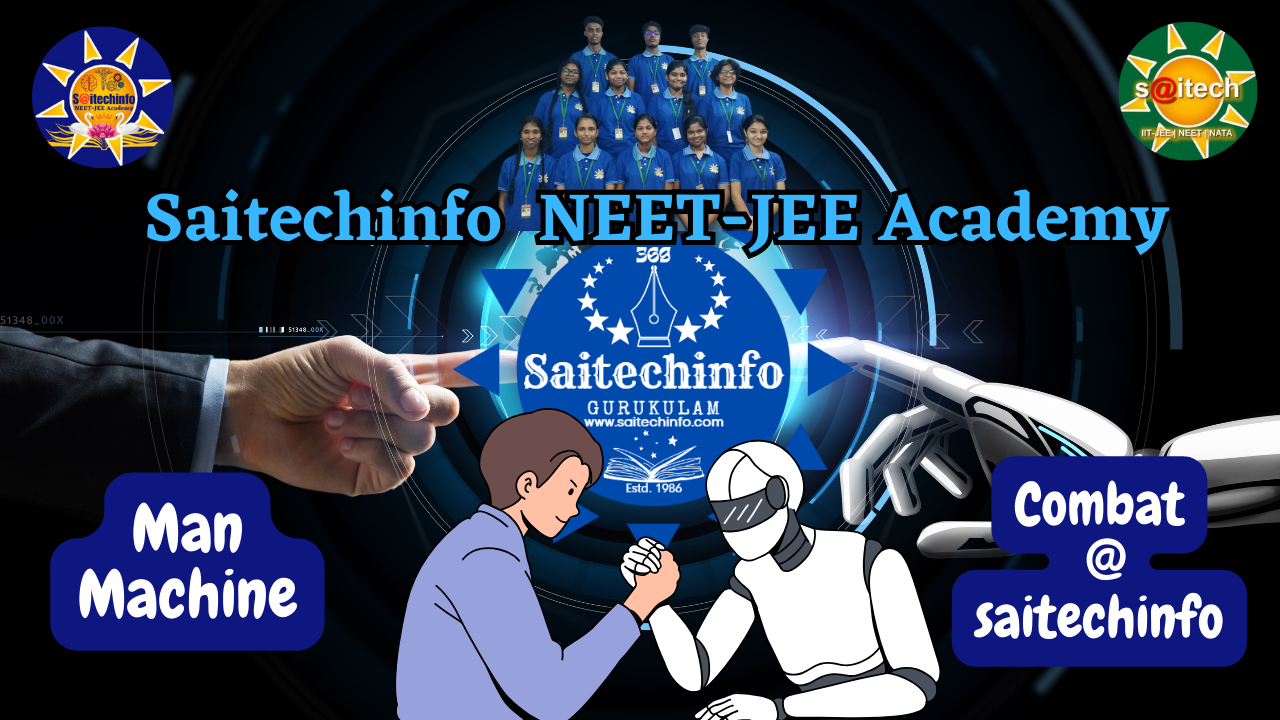
For a structured chapter-wise approach to study two chapters each week and facilitate deep learning, here’s a comprehensive guide to crafting chapter-wise notes. This approach aligns with the needs of NEET and JEE aspirants by including critical content and examination-focused strategies.
Each chapter contains the following.
- Topic tree
- Terms and Definitions
- Related Data, Equations, Formulae, Symbols, Constants, SI units
- Worksheets – Word Search, Cross Word Puzzles, MCQ, Fill in the blank questions to familiarize basic concepts, terms and definitions
- Infographics – Diagrams, graphs, tables, organisation charts etc.
- Concept Maps
- Concept Audios and Videos
- Doubt Clinic Audios and Videos
- Important Derivations
- Problems – Example, Text book and miscellaneous
- Question Bank – Board and Competitive Examinations
- Centum Cyclic Unit Test Questions and Answers
- Sketch Note Summary

Weekly Study and Note Compilation Plan
- Complete Two Chapters Weekly: Dedicate the week to two chapters, with equal time split for understanding concepts and solving problems. Use additional resources like Saitechinfo Quizizz links for quick concept checks and Saitechinfo YouTube videos for visual understanding. You can also use our chapter wise notes from our website or channel www.saitechinfo.com
- Prepare Chapter-Wise Notes: Each student should compile a thorough summary of each chapter in a “smart notes” file with the following components:
Chapter-Wise Notes Contents
- Topic Tree: Outline the chapter’s main sections and subsections to create a hierarchical understanding of concepts.
- Terms and Definitions: Define key terms specific to the chapter. Use glossaries from textbooks for Tamil or English terms when needed.
- Concept Maps: Visualize connections between concepts, especially useful for topics like chemical bonding, thermodynamics, or biology cycles.
- Derivations and Equations: Include essential derivations, especially in Physics and Chemistry. These are critical for JEE.
- Formulae: Compile key formulae with annotations for quick reference and applications in NEET and JEE exams.
- Textbook Problems: Solve and document standard textbook problems to ensure coverage of foundational questions.
- Additional Problems: Use supplementary problems from mock tests and other materials for advanced practice.
- Centum Cyclic Unit Tests: Include practice test questions to assess understanding periodically.
- Frequently Asked NEET/JEE MCQs: Add chapter-wise MCQs frequently seen in NEET and JEE exams to build confidence with exam-style questions.
Advantages of Chapter-Wise Preparation
- Enhanced Retention: Systematic chapter-wise review supports better memory recall and conceptual understanding.
- Focused Exam Preparation: Frequent MCQ and problem-solving practice aligns with NEET/JEE formats, improving response accuracy and speed.
- Efficient Revision: Smart notes provide a quick reference for revision, especially helpful during last-minute preparations.
- Consistent Learning Pace: Two chapters weekly ensure manageable progress, minimizing burnout and maximizing retention.
By following this chapter-wise approach, students can effectively manage their workload, deepen their conceptual understanding, and equip themselves with the tools and practice needed to excel in competitive exams like NEET and JEE.
வாராந்திர அளவில் இரண்டு அத்தியாயங்களை முடித்து, ஆழமான கற்றலை இயக்க ஒரு கட்டமைக்கப்பட்ட பாணியைப் பின்பற்ற, அத்தியாய வாரியான குறிப்புகளை உருவாக்குவதற்கான முழுமையான வழிகாட்டி கீழே கொடுக்கப்பட்டுள்ளது. இது NEET மற்றும் JEE தேர்வர்களின் தேவைகளுக்கு ஏற்றவாறு முக்கிய உள்ளடக்கத்தையும் தேர்வுக்குத் தேவையான மூலக்குறிப்புகளையும் வழங்குகிறது.
வாராந்திர கற்றல் மற்றும் குறிப்பு தொகுப்பு திட்டம்
- வாரந்தோறும் இரண்டு அத்தியாயங்களை முடிக்கவும்: ஒரு வாரத்தில் இரண்டு அத்தியாயங்களையும் புரிந்து கொள்ளவும், மற்றும் பிரச்சினைகளைக் கையாளவும் சம அளவு நேரத்தை ஒதுக்கவும். துரிதமான கருத்து சோதனைகளுக்கான Saitechinfo Quizizz இணைப்புகள் மற்றும் பார்வை அடிப்படையிலான புரிதலுக்கான Saitechinfo YouTube வீடியோக்கள் போன்ற கூடுதல் மூலங்களைப் பயன்படுத்தவும். www.saitechinfo.com
- அத்தியாய வாரியான குறிப்புகளைத் தயாரிக்கவும்: ஒவ்வொரு மாணவரும் ஒவ்வொரு அத்தியாயத்தின் சுருக்கமான குறிப்புகளை, “ஸ்மார்ட் நோட்ஸ்” கோப்பில் பின்வரும் கூறுகளுடன் தொகுக்க வேண்டும்:
அத்தியாய வாரியான குறிப்புகள் உள்ளடக்கம்
- Topic Tree: கருத்துக்களின் அத்தியாயத்தின் முக்கிய பகுதிகள் மற்றும் துணைப்பகுதிகளைச் சித்தரிக்கும் ஒரு ஒழுங்கமைக்கப்பட்ட விளக்கம்.
- சொற்கள் மற்றும் வரையறைகள்: அத்தியாயத்திற்கு உரிய முக்கிய சொற்களை வரையறுக்கவும். தேவையான சமயங்களில் பாடநூல்களிலிருந்து தமிழ் அல்லது ஆங்கில சொற்களைப் பயன்படுத்தி கூக்களஞ்சியத்தைச் சேர்க்கவும்.
- கருத்து வரைபடங்கள்: முக்கியத் தலைப்புகளில் கருத்துகளுக்கு இடையே உள்ள தொடர்புகளைத் தோராயமாகச் சித்தரிக்கவும், குறிப்பாக வேதி பிணைப்பு, வெப்பவியல், அல்லது உயிரியல் சுழற்சிகள் போன்ற தலைப்புகளுக்கு உதவும்.
- மூலவுருக்கள் மற்றும் சமன்பாடுகள்: குறிப்பாக பௌதிகவியல் மற்றும் வேதியியல் பாடங்களில், முக்கிய மூலவுருக்களையும் சமன்பாடுகளையும் சேர்க்கவும். JEE-க்கு இவை முக்கியமானவை.
- சமன்பாடுகள்: வேதியியல் மற்றும் பௌதிகவியலில் உள்ள முக்கியமான சமன்பாடுகளைச் சேர்த்து, விரைவில் அணுக உதவும் குறிப்புகள் மற்றும் பயன்பாடுகளுடன் தொகுக்கவும்.
- பாடநூல் பிரச்சினைகள்: அடிப்படை கேள்விகளைத் தீர்க்கவும், ஆதார கேள்விகளின் கவனத்தை உறுதி செய்யவும்.
- கூடுதல் பிரச்சினைகள்: மேம்பட்ட பயிற்சிக்காக மாதிரி தேர்வுகள் மற்றும் பிற பொருட்களிலிருந்து கூடுதல் பிரச்சினைகளைப் பயன்படுத்தவும்.
- Centum Cycle Unit Tests: கருத்துகளைப் பரிசோதிக்க முறையான சரிபார்ப்பு கேள்விகளைச் சேர்க்கவும்.
- தேர்வுகளில் அடிக்கடி கேட்கப்படும் NEET/JEE MCQs: NEET மற்றும் JEE தேர்வுகளில் அடிக்கடி காணப்படும் அத்தியாய வாரியான MCQகளைச் சேர்க்கவும்.


